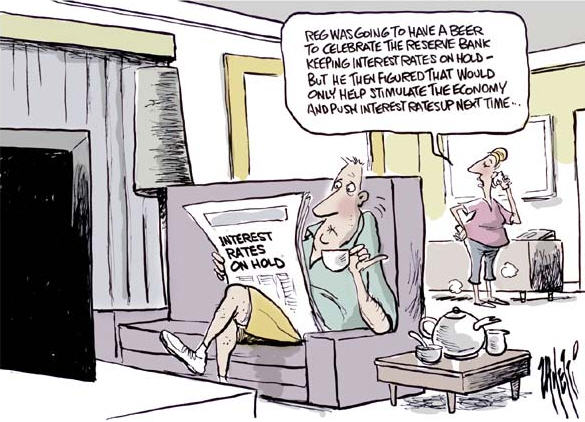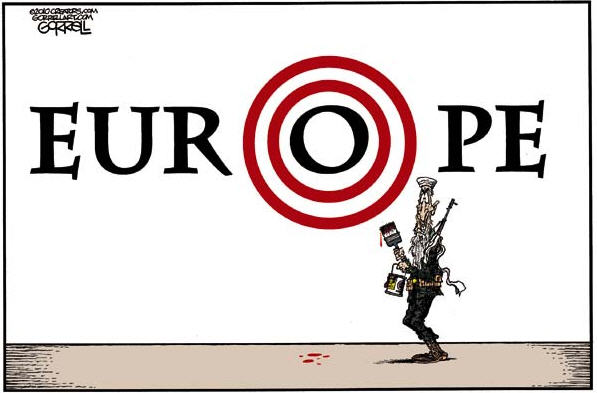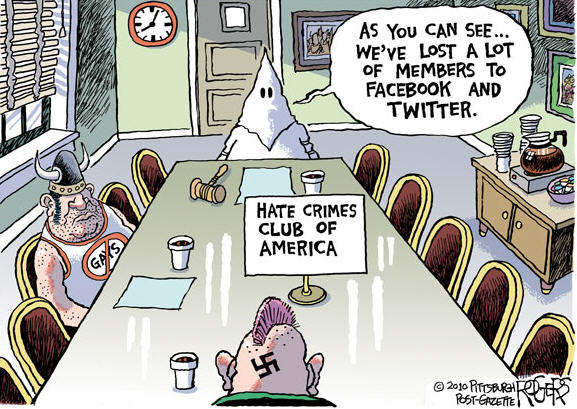Commodities and QE2 Buoys Stock Markets
Stock-Markets / Stock Markets 2010 Oct 06, 2010 - 07:00 AM GMTBy: PaddyPowerTrader
 Tuesday was turnaround day – markets began to rally over lunchtime in a move that would last until the end of the session. There was no concrete explanation as to what started the move, though some cited positive Meredith Whitney comments while others suggested it was on the back of whispers the ISM number would be much better than consensus. In the event the services ISM number printed 53.2 v a 52 consensus, allowing markets to push on. S&P 500 traded through the key 1150 level. Europe finished near the days highs, with banks the biggest gainers as those with peripheral exposure gained on the back of Moody’s saying they are ‘impressed’ with Greek government actions.
Tuesday was turnaround day – markets began to rally over lunchtime in a move that would last until the end of the session. There was no concrete explanation as to what started the move, though some cited positive Meredith Whitney comments while others suggested it was on the back of whispers the ISM number would be much better than consensus. In the event the services ISM number printed 53.2 v a 52 consensus, allowing markets to push on. S&P 500 traded through the key 1150 level. Europe finished near the days highs, with banks the biggest gainers as those with peripheral exposure gained on the back of Moody’s saying they are ‘impressed’ with Greek government actions.
Stateside, banks benefitted from positive comments from JP Morgan saying their were likely to top Q3 estimates , miners followed commodities higher, and energy stock rallied as Crude (+1.75%) prices rose and Chevron announced a buyback. Gold continued its recent stellar run as the potential for additional quantitative easing and the likelihood of continued fiat currency weakness bolstered the desire to own gold,
Mining names are bid today in Europe again with BHP Billiton, the world’s biggest mining company, up 2.4% and Rio Tinto, the third-largest, better by 2.3% as Aluminum, copper, lead, nickel, tin and zinc all increased on the London Metal Exchange. Separately Antofagasta , the copper producer controlled by Chile’s Luksic family, soared 5.2%, the highest price since it first sold shares to the public.
Today’s Market Moving Stories
The world is clearly still gripped by QE2 fever. And finally stocks respond, with the S&P500 +2.1% (Tuesday with a intraday high was highest in almost 4 months (May 13)). The Nikkei rallied +1.5%.overnight after the BoJ fired the starting pistol Monday (or at least the gun is now loaded, waiting to be fired). The RBA also unexpectedly sat on its hands when it had every justification to hike. Then Fed’s Evans came out in favour of asset purchases overnight (see below for more on this). He favours “much more accommodation than we’ve put in place”. And this was all the evidence the market needed: global synchronised QE now a realistic possibility. “Buy risk, sell USD” is the mantra.
EUR/ GBP likely to rise into MPC decision
So far, attention has focused on Fed and BoJ. But BoE will come under the spotlight over the next 30 hours as BoE policy decision approaches. The FX market is going to start worrying BoE could follow BoJ’s example and ease too. Before Monday’s moves, it seemed extremely unlikely MPC would vote for QE, and it’s still very unlikely. But the markets will perceive the risks of action have increased a notch, and I’d expect that to be reflected in a higher EURGBP as the meeting approaches. Cable should stay supported though given likelihood of Fed easing.
Why should Thursday’s MPC be a non-event (in spite of fears to the contrary)? We know Posen wants to ease now (he said so twice in the past 2 weeks). We know Sentance is unrepentant, so he’ll vote to hike. So to get QE, Posen will need to persuade at least 4 of the remaining 7 committee members to join him. A “big ask” given that…
•The BoJ moved because the government desperately needs a weaker yen and BoJ will need the toolbox to match the Fed blow for blow to achieve this. But the BoE doesn’t really need Sterling weaker.
•They may want to wait until govt comprehensive spending review published on Oct 20
•They may want to first see the next quarterly inflation report, due in Nov.
Next subsequent BoE meeting is Nov 4 – only a day after the next FOMC, so may want to first see what Fed does, and then respond in kind.
But…on the other hand – policy surprises are not uncommon (we had two just yesterday)
Currency Wars
This is all getting a bit hysterical now. The FT quotes IMF MD Strauss Kahn: “There is clearly the idea beginning to circulate that currencies can be used as a policy weapon”. “Translated into action, such an idea would represent a very serious risk to the global recovery . . . Any such approach would have a negative and very damaging longer-run impact.” The mercury is clearly rising now: even Trichet (who usually sidesteps comment on FX matters) was quite vocal yesterday in his criticism of China’s FX policy (China is on holiday Mon-Thurs this week…let’s see what happens at the mid-point fixing on Friday). And the EU Commissioner Ollie Rehn became the first EU personality to publically worry about the euro’s recent strength: “if the euro continues to bear a disproportionate burden of global exchange rates, the recovery of the euro area might be weakened”. Bear in mind though that the comment was more directed at prodding China to move faster rather than talking down the euro. Martin Wolf in today’s FT asks: “has the time come for a currency war with China? The answer looks increasingly to be yes.” He also asks: “If a decision to invest half a country’s gross domestic product in currency reserves is not exchange rate manipulation, what is?”

FRB Chicago’s Evans: “far more accommodation is required”
In an interview conducted on Monday with the WSJ, Charles Evans, President of the Federal Reserve Bank of Chicago, gave even stronger backing to a move to QE-2 by the Fed (compared with his remarks last week), in arguing, “in the last several months I’ve stared at our unemployment forecast and come to the conclusion that it’s just not coming down nearly as quickly as it should. This is a far grimmer forecast than we ought to have” and hence he argued that the Fed needed “more accommodation”. Mr Evans stressed in the interview that he considered that the US was in a liquidity trap characterised by excess savings, saying that “people are saving tremendously, businesses are sitting on a pile of cash”. He argued therefore that the Fed needed to lower real interest rates to induce households and businesses to save less, and therefore “might aim to overshoot its informal 2% target for a time to make up for lost ground”. Separately, Brian Sack, head of the markets desk at the NY Fed, commented on Monday that US balance sheet expansion would “likely provide additional accommodation” to help an economic forecast that is likely to be “relatively tepid”.
US Outlook
Goldman Sachs said in a research note yesterday that the U.S. economy will be “fairly bad” or “very bad” over the next six to nine months. “We see two main scenarios,” analysts led by the much respected Jan Hatzius, the New York-based chief U.S. economist, said in an e-mail. “A fairly bad one in which the economy grows at a 1 1/2 percent to 2 percent rate through the middle of next year and the unemployment rate rises moderately to 10 percent, and a very bad one in which the economy returns to an outright recession.” The Federal Reserve will probably move to spur growth as soon as its next meeting Nov. 2-3, Hatzius wrote. Expectations for central bank action have already led to lower interest rates, higher stock prices and a weaker dollar, according to Goldman, one of the 18 primary dealers that are required to bid at government debt sales.
Futhermore Goldman’s chief US economist also said that while the Federal Reserve will “very likely” take more steps to ease monetary policy, asset purchases will have a limited effect on the economy. “They’re going to do quite a lot but it’s probably still going to fall short,” Hatzius said today at a fiscal policy conference in Washington. “There is going to be a natural bias towards caution among monetary policy makers.” Hatzius, who’s based in New York, said
another $1 trillion worth of asset purchases by the Fed would probably lower long- term interest rates by about 0.25 percentage point, adding a “few tenths of additional GDP growth.”

UK Employment / Inflation / Housing
U.K. demand for new permanent staff grew at a slower pace in September while average pay deals were also lower than in August, as public sector employers begin cutting costs and business confidence stutters ahead of widespread government spending cuts and an expected slowdown in economic growth, a survey shows Wednesday. This was according to the monthly Report on Jobs–compiled by Markit for the Recruitment and Employment Confederation and KPMG.
U.K. shop prices rose at the fastest pace in five months in September, driven by a surge in food prices following increases in the cost of wheat, oil and corn, but prices now appear to be stabilizing, a survey showed Wednesday. According to the British Retail Consortium’s monthly shop price index, U.K. shop prices rose 0.2% in September from August and were 1.9% higher when compared with September 2009.
Investment funds may become Britain’s next generation of residential landlords following a government- backed group’s 17-month campaign to revive the homebuilding market after individual investors were forced out. Aviva Plc is preparing a 1 billion-pound fund to purchase newly built homes, according to its adviser. The U.K.’s second-biggest insurer is among the institutional investors approached by the state-funded Homes and Communities Agency as it tries to replace small-scale buyers that were pushed out of the market during the credit crisis.
US Banks
According to the FT, Wall Street’s sentiment towards Goldman Sachs and Morgan Stanley has turned sharply bearish over the past month with analysts’ estimates for the banks’ third-quarter earnings plunging amid a slump in trading activities. The poor performance of the trading operations – a key driver of the two banks’ recovery after the financial crisis – will intensify questions over
their business models and deepen fears of job cuts across the financial industry. Analysts have slashed their forecasts for Morgan Stanley’s third-quarter results by more than 73 per cent in the past 30 days, according to Thomson Reuters’ StarMine. Goldman’s consensus estimate has fallen by more than a -quarter since early September.
AIB
The are (some misleading…no change there then !) wire reports today that banks and hedge funds may have to pay out on Anglo Irish Bank Corp. debt insurance after the government insisted holders of its riskiest bonds share the pain of a $47 billion bailout. The cost of credit default swaps protecting Anglo Irish’s subordinated notes has more than doubled since Sept. 1 on speculation of a payout. Irish Finance Minister Brian Lenihan said last week that holders of the bank’s 2.45 billion euros of junior notes must take on some of the “burden” of the rescue, raising the prospect of the swaps being triggered. Hence some of the hysteria of the relatively minor amount of subordinated debt i.e. there are no doubt vastly leveraged CDS positions riding on this that are a huge multiple of the nominal value of Anglo’s sub debt. That said a tender is NOT an act of default as it is voluntary
Also AIB has announced that it has commenced the disposal process of its stake in M&T stake through a public offering. The public offer will be for 26.7 million notes, exchangeable for shares in M&T bank. The move by the bank comes following last Thursday’s announcement by the Irish Government that AIB’s capital requirement had grown to Euro 10.4 billion following the increase in the projected discount rate on its Euro 22 billion of NAMA destined assets to 60%. Following the breakdown of talks between M&T and Santander about a possible merger of US operations, AIB appears to have been left to drive the sale of its stake in the former. The level of discount which the public offer will require to attract investors is now the key dynamic in the pay off for AIB of the sale of the stake. Projections would have put the value of the M&T stake at Euro 1.1 billion to Euro 1.2 billion of capital for the bank.

Company / Equity News
•Volkswagen rose 2.4% today as Europe’s largest carmaker said it may produce a mid-sized sedan, which it designed for U.S. customers, in China.
•EasyJet jumped 9.6% as Europe’s second-biggest discount airline said pretax profit for the 12 months to Sept. 30 was “slightly ahead” of its £150 million top-end forecast because of surging demand for flights to beach resorts and European cities and lower-than-expected losses from the Icelandic ash cloud. Separately, EasyJet said it handled 4.7 million passengers in September, an increase of 8 percent from a year earlier. The company’s load factor climbed 1.2% to 89.3%. And British Airways climbed 3.9%, while Ryanair increased by 3.3%
•Ferrovial is ahead by 3.6% after the Canada Pension Plan Investment Board agreed to buy an additional 10%in the 407 Express Toll Route near Toronto for C$894 million from Ferrovial.
•Saipem has added 2% as Europe’s largest oilfield-services provider was raised to “buy” from “sell” at Citigroup.
•Wellstream has lost 3.6% today after General Electric said the U.K. oilfield-services provider rejected a £755 million takeover offer. It is unlikely GE will consider a hostile takeover, though Wellstream may be in talks with other potential buyers, Panmure Gordon analyst Peter Hitchens wrote in a note to investors today.
•And Ericsson fell 1.6% after a broker downgrade at Royal Bank of Canada who cut its estimate for the world’s biggest maker of mobile- phone networks third-quarter sales to 46 billion kronor ($6.9 billion) from 50 billion kronor. The brokerage said “currency impact, lingering component shortages and the lack of improvement in emerging markets may point to underwhelming results for Ericsson in the near term.”
•Motorola has unveiled six new smartphones including a version of its Droid handset for business users as the company looks to capitalize on surging demand for devices based on Google Inc.’s Android software.
•Google.’s Android software has become the most popular operating system in the U.S. among new smartphone buyers, passing the iPhone and BlackBerry platforms, according to Nielsen Co. Android was the top choice for U.S. consumers who bought a smartphone in the past six months with Research In Motion Ltd.’s BlackBerry and Apple Inc.’s iPhone tied for second place, Nielsen said. Android has surged in popularity because the software is free to any company that wants to build phones using it and a wide range of manufacturers have adopted it, including Motorola Inc. and HTC Corp.
•Rio Tinto Group, the world’s third- largest mining company, said regulators signaled they may object to a proposed iron ore joint venture with BHP Billiton Ltd. as the Age newspaper reported the deal was dead. “The board acknowledged recent communications from regulators that indicate potential obstacles to achieving clearance,” London-based Rio said in a statement after an Oct. 4 board meeting. The Japan Fair Trade Commission and the Korea Fair Trade Commission have given Rio interim reports on the venture and Rio said it’s continuing talks with Australian and European regulators.
•ThyssenKrupp CEO Ekkehard Schulz says the company returned to profit in the fiscal year ended Sept. 30, the daily Handelsblatt reports in Wednesday’s edition. “The pretax result is going in the direction of EUR1 billion, or even a bit more,” Schulz is quoted as saying. A year earlier, the company suffered a pretax loss of EUR2.4 billion. The improvement is largely due to cost-cutting, with business recovering slowly, the report said.
•Toyota Motor was accused by U.S. investors of violating securities law by failing to disclose acceleration-related defects that it knew about, according to a consolidated complaint in a class-action lawsuit. The shareholders, led by the Maryland State Retirement and Pension System, said in the Oct. 4 filing in federal court in Los Angeles that internal documents show Toyota deliberately concealed unintended sudden acceleration problems in the U.S. They said the
company knew about the defects as early as 2000 and “stonewalled” regulators to avoid recalls.
•Sainsbury announced decent Q2 trading figures this morning, with like for like sales ex petrol rising 2.9%, ahead of the 2.0% expected as well as the 1.1% reported in Q1. H1 like for like sales growth of 2.0% compares favourably with the 1.3% reported by Tesco yesterday over a broadly similar (but not identical) period. There were the usual platitudes that the consumer environment remains challenging, but Sainsbury continues to trade robustly in spite of this.
PaddyPowerTrader.com
The Mole is a man in the know. I don’t trade for a living, but instead work for a well-known Irish institution, heading a desk that regularly trades over €100 million a day. I aim to provide top quality, up-to-date and relevant market news and data, so that traders can make more informed decisions”.© 2010 Copyright PaddyPowerTrader - All Rights Reserved
Disclaimer: The above is a matter of opinion provided for general information purposes only and is not intended as investment advice. Information and analysis above are derived from sources and utilising methods believed to be reliable, but we cannot accept responsibility for any losses you may incur as a result of this analysis. Individuals should consult with their personal financial advisors.
PaddyPowerTrader Archive |
© 2005-2022 http://www.MarketOracle.co.uk - The Market Oracle is a FREE Daily Financial Markets Analysis & Forecasting online publication.



